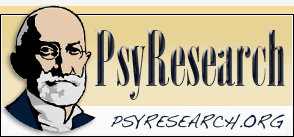 |
||
Journal of Experimental Psychology: Animal Learning and Cognition - Vol 50, Iss 2 | Random Abstract |
 The Journal of Experimental Psychology: Animal Learning and Cognition® publishes experimental and theoretical studies concerning all aspects of animal behavior processes. Studies of associative, nonassociative, cognitive, perceptual, and motivational processes are welcome.
The Journal of Experimental Psychology: Animal Learning and Cognition® publishes experimental and theoretical studies concerning all aspects of animal behavior processes. Studies of associative, nonassociative, cognitive, perceptual, and motivational processes are welcome.Copyright 2024 American Psychological Association
- The role of uncertainty in regulating associative change.
Rescorla (2000, 2001) interpreted his compound test results to show that both common and individual error terms regulate associative change such that the element of a conditioned compound with the greater prediction error undergoes greater associative change than the one with the smaller prediction error. However, it has recently been suggested that uncertainty, not prediction error, is the primary determinant of associative change in people (Spicer et al., 2020, 2022). The current experiments use the compound test in a continuous outcome allergist task to assess the role of uncertainty in associative change, using two different manipulations of uncertainty: outcome uncertainty (where participants are uncertain of the level of the outcome on a particular trial) and causal uncertainty (where participants are uncertain of the contribution of the cue to the level of the outcome). We replicate Rescorla’s compound test results in the case of both associative gains (Experiment 1) and associative losses (Experiment 3) and then provide evidence for greater change to more uncertain cues in the case of associative gains (Experiments 2 and 4), but not associative losses (Experiments 3 and 5). We discuss the findings in terms of the notion of theory protection advanced by Spicer et al., and other ways of thinking about the compound test procedure, such as that proposed by Holmes et al. (2019). (PsycInfo Database Record (c) 2024 APA, all rights reserved)

- Cue duration and trial spacing effects in contingency assessment in the streaming procedure with humans.
According to the cycle/trial (C/T) rule, the rate of associative learning is a function of the ratio between the overall rate of U.S. presentation (C) and its rate in the presence of the conditioned stimulus (CS; [T]). This rule is well supported in studies with nonhumans. The present study was conducted to test whether it also applies to human contingency learning. In Experiment 1, participants were exposed to rapid streams of trials. Sensitivity to the cue-outcome contingency varied with both intertrial interval (ITI, which captures C) and cue duration, but the C/T rule was not respected, notably because the effect of ITI was much larger than the effect of cue duration. Experiment 2 showed that mere suppression of verbal strategies did not alter the magnitude of the ITI effect. Experiment 3 replicated Experiment 1 but with cue duration and ITI varied between 1,000 and 3,000 ms instead of between 100 and 1,000 ms. Performance was insensitive to both cue duration and ITI. This was not the consequence of Experiment 3 only varying the cue duration to ITI ratio by a factor of 3; in Experiment 4 where the cue duration was 100 ms, a 300-ms ITI was sufficient to observe an ITI effect. The lack of an ITI effect with a 1,000-ms cue and an ITI varying between 1,000 and 3,000 ms was replicated in Experiment 5. These results are discussed in light of how processes underlying associative learning might break down when events occur very rapidly. (PsycInfo Database Record (c) 2024 APA, all rights reserved)

- Latent inhibition in humans from simple stimulus exposure.
Two experiments observed an effect consistent with a latent-inhibition (LI) effect in humans that (a) did not depend on masking or instruction-generated expectations and (b) suggested that the effect results from a change in processing of the predictive cue. Participants viewed a video of a superhero character flying through three different contexts past a different stimulus in each context. In conditioning, The superhero flew past a target cue that was either Novel (Group No Exposure), had been preexposed in the Same context as where conditioning was occurring (Group Same), or was preexposed in a Different context (Group Different). Each time the superhero flew past the target cue his Hands Glowed (outcome). On test (E1), an image of the superhero flying in the context with normal Hands and the target cue was present. Participants were asked if anything was missing. Experiment 2 tested participants with the superhero present and his Hands Glowing to test outcome–cue associations (Test 1) or just the superhero in the context (Test 2, counterbalanced) to assess contextual associations. In E1 fewer people in Group Same reported the outcome missing than Group No Exposure or Group Different. In E2 fewer people in Group Same reported the target cue missing when presented with the outcome than in the other groups, a result inconsistent with interference accounts of LI. When presented only with contextual cues, reports of the stimulus missing showed that the context was associated with the stimuli presented within it. Results are discussed with respect to theories and demonstrations of human LI. (PsycInfo Database Record (c) 2024 APA, all rights reserved)

- The effect of four different object properties on latency to approach in Goffin’s cockatoos (Cacatua goffiniana).
Neophobia and neophilia can be lifesaving as they can facilitate foraging while avoiding predation or intoxication. We investigated the extent to which Goffin’s cockatoos (Cacatua goffiniana) exhibit ecollogically relevant and quantifiable neophobic responses toward specific object properties. Twelve cockatoos were presented with 12 novel objects grouped into four distinct categories with unique features: size, color, reflective capacity, and shape. The cockatoos were tested by measuring their latency to approach a high-quality food reward for both novel and control scenarios. Age and sex did not affect the latency to approach food in the presence of a novel object in this species. Additionally, we found no significant differences between the objects of the reflective and color categories. This result is likely due to the plasticity of neophobic behavior related to the benefits and costs of approaching novel stimuli. The cockatoos were significantly slower to approach food in the presence of objects larger than their body size than objects of a similar or smaller size, a phenomenon possibly explained by the increased risk of approaching unknown objects large enough to be a potential predator. They were also significantly more hesitant to approach food in the presence of elongated objects, a phenomenon potentially explained by an ecologically relevant avoidance of snakes. The extent of this neophobia was statistically similar at a group level, indicating that avoidance of elongated and large objects could be an adaptive response aiding survival under natural circumstances and that snakes may impose strong selective pressures on this species. (PsycInfo Database Record (c) 2024 APA, all rights reserved)

- An analysis of reinstatement after extinction of a conditioned taste aversion.
Taste aversion learning has sometimes been considered a specialized form of learning. In several other conditioning preparations, after a conditioned stimulus (CS) is conditioned and extinguished, reexposure to the unconditioned stimulus (US) by itself can reinstate the extinguished conditioned response. Reinstatement has been widely studied in fear and appetitive Pavlovian conditioning, as well as operant conditioning, but its status in taste aversion learning is more controversial. Six taste-aversion experiments with rats therefore sought to discover conditions that might encourage it there. The results often yielded little to no evidence of reinstatement, and we also found no evidence of concurrent recovery, a related phenomenon in which responding to a CS that has been conditioned and extinguished is restored if a second CS is separately conditioned. However, a key result was that reinstatement occurred when the conditioning procedure involved multiple closely spaced conditioning trials that could have allowed the animal to learn that a US presentation signaled or set the occasion for another trial with a US. Such a mechanism is precluded in many taste aversion experiments because they often use very few conditioning trials. Overall, the results suggest that taste aversion learning is experimentally unique, though not necessarily biologically or evolutionarily unique. (PsycInfo Database Record (c) 2024 APA, all rights reserved)

Back to top
Back to top
© 2024 PsyResearch.org
